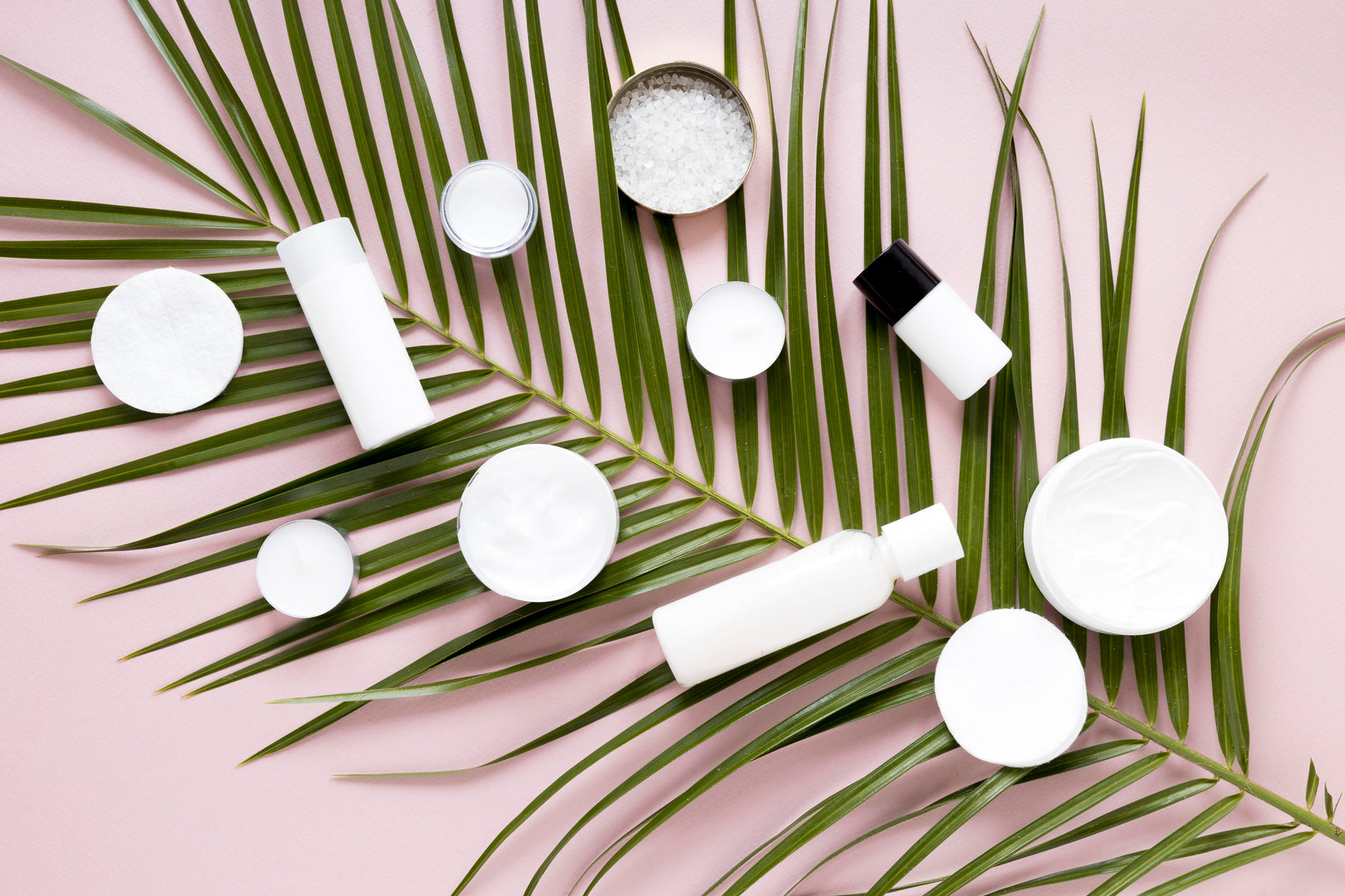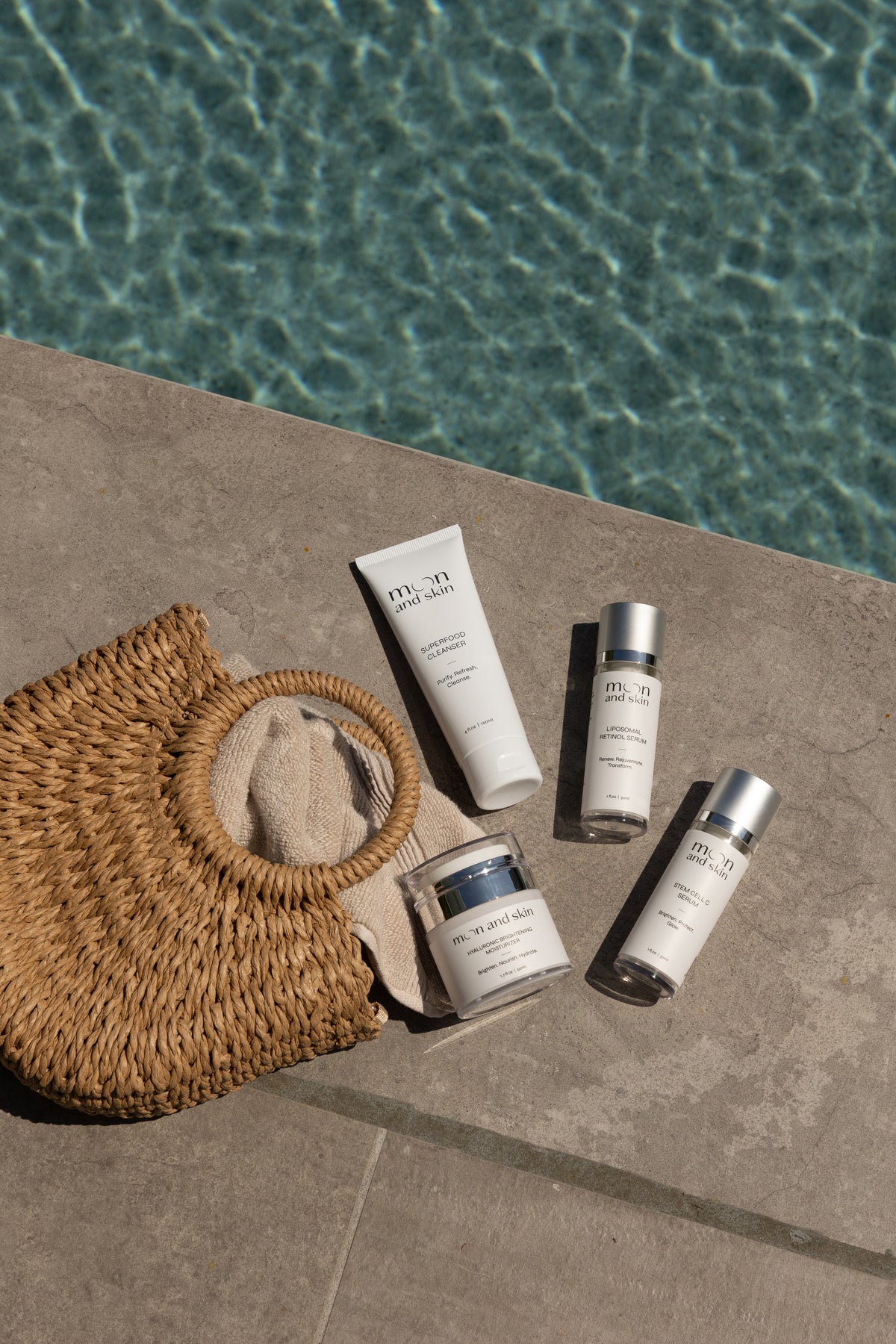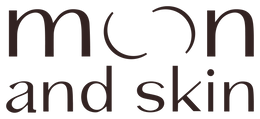Table of Contents
Introduction
Have you ever experienced a fiery sensation on your skin after incorporating a new product into your routine? If so, you may be familiar with the term "retinol burn." This phenomenon can be alarming for many, especially those eager to reap the skincare benefits of retinol, a powerful derivative of vitamin A. As we navigate the complex world of skincare, understanding the implications of retinol use, including the potential for irritation, is crucial.
Retinol has gained immense popularity for its ability to enhance skin texture, reduce fine lines, and promote a youthful glow. However, as with any potent ingredient, it comes with its challenges. Many users report skin irritation or “burn” upon first use of retinol products, leading to confusion and frustration. This blog post aims to provide clarity about retinol burn, including its causes, symptoms, treatment, and how to safely incorporate retinol into your skincare routine.
At Moon and Skin, we believe in empowering our community with knowledge about skincare, enabling informed choices that align with our mission of providing clean, thoughtful skincare for every phase of life. Together, let's explore the nuances of retinol and learn how to use it effectively without compromising skin health.
What is Retinol?
Retinol is a type of retinoid, which is a class of compounds derived from vitamin A. It is renowned for its ability to accelerate skin cell turnover, leading to a brighter complexion and improved skin texture. By increasing collagen production, retinol can help diminish the appearance of fine lines and wrinkles. It also plays a significant role in treating acne by preventing clogged pores and reducing inflammation.
While the benefits of retinol are well-documented, it is essential to understand its potency. Retinol comes in various concentrations, and the higher the concentration, the greater the risk for adverse effects, such as retinol burn.
What is Retinol Burn?
Retinol burn, often referred to as retinol irritation or dermatitis, is a common side effect experienced by many individuals who begin using retinol products. Symptoms may include:
- Redness: A flushed appearance on the skin, indicating inflammation.
- Dryness and Flaking: Increased skin cell turnover can lead to dry, flaky patches.
- Burning Sensation: A painful or uncomfortable feeling that can resemble a burn.
- Itching: A desire to scratch the affected area, which can exacerbate irritation.
Understanding that retinol burn is a temporary condition that typically resolves as your skin adjusts to the ingredient is crucial. However, it’s essential to take steps to minimize this irritation and protect your skin barrier.
Causes of Retinol Burn
Several factors contribute to the occurrence of retinol burn:
-
High Concentration of Retinol: Products with a higher concentration of retinol are more likely to cause irritation, especially for those new to retinoids.
-
Skin Sensitivity: Individuals with sensitive skin or pre-existing skin conditions, such as eczema or rosacea, may be more susceptible to irritation.
-
Frequency of Application: Using retinol too frequently, especially in the initial stages, can overwhelm the skin.
-
Incorrect Application: Not applying a moisturizer alongside retinol or using it on already irritated skin can exacerbate the risk of retinol burn.
-
Environmental Factors: External factors such as weather conditions, sun exposure, and the use of other active ingredients (like exfoliants) can heighten sensitivity and irritation.
By understanding these causes, we can take proactive measures to prevent retinol burn and enjoy the benefits of this powerful ingredient.
How to Prevent Retinol Burn
Preventing retinol burn is largely about easing your skin into the retinol experience. Here are some effective strategies to minimize the risk of irritation:
Start Slow
When introducing retinol into your routine, begin with a lower concentration and apply it only twice a week. Gradually increase the frequency as your skin builds tolerance. This method allows your skin to adapt to the ingredient without overwhelming it.
Buffering Technique
One effective technique to reduce irritation is called buffering. This involves applying your retinol product simultaneously with a moisturizer. By diluting the retinol, you can minimize its potency and reduce the likelihood of irritation.
For instance, you can use our Eclipse™ Retinol Serum in combination with Celestial™ Moisturizer to buffer the effects. This gentle approach helps your skin acclimate to retinol without sacrificing hydration or increasing irritation.
Avoid Irritated Skin
Never apply retinol on inflamed or irritated skin. If your skin feels sensitive or has been recently exposed to sunburn or other harsh treatments, it’s best to wait until it has fully healed before introducing retinol.
Prioritize Sunscreen
Using retinol makes your skin more susceptible to sunburn and damage. Therefore, wearing broad-spectrum sunscreen with an SPF of 30 or higher every day is essential. This protective measure helps prevent further irritation and sun damage.
Consult a Professional
If you’re unsure about how to incorporate retinol into your routine, consider consulting a dermatologist or skincare professional. They can provide personalized recommendations based on your skin type and concerns.
How to Treat Retinol Burn
If you do experience retinol burn, it’s essential to know how to treat it effectively. Here are some steps to soothe irritated skin:
Stop Using Retinol
As soon as you notice signs of retinol burn, discontinue use of the product immediately. Continuing to apply retinol on irritated skin can worsen the condition.
Keep it Simple
During recovery, simplify your skincare routine. Stick to gentle cleansers and hydrating moisturizers while avoiding any other active ingredients that could further irritate the skin.
Hydrate
Using a gentle, hypoallergenic moisturizer can help rehydrate your skin and restore its barrier. Our Celestial™ Moisturizer is formulated to nourish and strengthen the skin's moisture barrier, providing relief from dryness and irritation.
Cold Compress
Applying a cold compress to the affected area can help alleviate discomfort and reduce redness. This soothing technique can provide immediate relief from the burning sensation.
Consider Soothing Ingredients
Look for products containing soothing botanicals like aloe vera or chamomile, which can calm inflammation and promote healing.
Over-the-Counter Treatments
If necessary, you may consider using over-the-counter hydrocortisone cream to reduce inflammation. However, use it sparingly and avoid prolonged use, as it can thin the skin.
When to Seek Professional Help
While retinol burn is usually a temporary condition, severe irritation or persistent discomfort may warrant a visit to a dermatologist. If you experience symptoms that resemble an allergic reaction, such as hives or extreme pain, seek professional advice for appropriate treatment.
Retinol and Your Skin Journey
At Moon and Skin, we view skincare as a personal and transformative journey, much like the phases of the moon. Just as the moon shines in various forms, your skin goes through different stages that deserve attention and care. Retinol can be a powerful ally in this journey, offering significant benefits when used thoughtfully.
Incorporating retinol into your routine can yield remarkable results, but it’s essential to do so with care. By understanding how to manage and prevent retinol burn, you can embrace the full potential of this ingredient without compromising your skin's health.
Key Takeaways
- Retinol burn is a common side effect of using retinol products, characterized by redness, dryness, and a burning sensation.
- Causes of retinol burn include high concentrations of retinol, skin sensitivity, incorrect application, and environmental factors.
- To prevent retinol burn, start slowly, use the buffering technique, apply sunscreen, and consult a professional if needed.
- If retinol burn occurs, stop using retinol, simplify your routine, hydrate, and consider soothing treatments.
Conclusion
Understanding the intricacies of retinol and its potential for causing irritation is essential for anyone looking to improve their skin health. At Moon and Skin, we believe in empowering our community with knowledge and thoughtful skincare solutions. By taking the time to learn about retinol burn and how to manage it, you can confidently incorporate retinol into your routine and enjoy its transformative benefits.
Are you ready to embark on your skincare journey with retinol? Explore our Eclipse™ Retinol Serum and other products designed to support your skin through every phase of life. Remember, knowledge is power, and together, we can achieve glowing, healthy skin.
FAQ Section
What does retinol burn feel like?
Retinol burn is often described as a painful or burning sensation on the skin, accompanied by redness, dryness, and flakiness.
How long does retinol burn last?
The duration of retinol burn can vary depending on the severity of the irritation. Generally, symptoms may resolve within a week with proper care and treatment.
Can I use retinol every day?
For beginners, it’s recommended to start using retinol a few times a week and gradually increase frequency as your skin builds tolerance. Overuse can lead to irritation and retinol burn.
What should I do if I have sensitive skin?
If you have sensitive skin, consider starting with a lower concentration of retinol and using the buffering technique to minimize irritation. Always consult a skincare professional for personalized advice.
Is sunscreen necessary when using retinol?
Yes, sunscreen is crucial when using retinol, as it increases your skin's sensitivity to the sun. Always apply broad-spectrum sunscreen during the day to protect your skin from UV damage.
Can I use other active ingredients with retinol?
While using retinol, it’s best to avoid combining it with other strong active ingredients, such as AHAs or BHAs, to prevent further irritation. Focus on a simple, gentle skincare routine while your skin adjusts.







